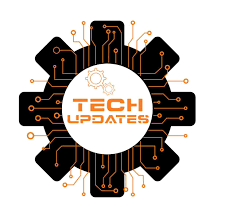Introduction
Blockchain technology continues to make waves in various industries, from finance to healthcare, supply chain management to digital identity verification. Initially popularized by Bitcoin, blockchain has evolved far beyond cryptocurrency and is now seen as a revolutionary tool with the potential to reshape numerous sectors. With its ability to provide secure, transparent, and decentralized data management, blockchain is rapidly becoming a cornerstone of digital innovation.
In this article, we’ll explore the latest trends and developments in the blockchain world, highlighting key advancements, real-world applications, and emerging challenges. Additionally, we’ll take a closer look at some frequently asked questions about blockchain technology.

1. The Rise of Central Bank Digital Currencies (CBDCs)
One of the most significant trends in the blockchain space is the development of Central Bank Digital Currencies (CBDCs). Unlike cryptocurrencies, which are decentralized, CBDCs are digital versions of a nation’s fiat currency issued and controlled by the central bank. Several countries are already experimenting with or planning CBDC projects, including China, the European Union, and the United States.
Why CBDCs Matter
CBDCs are seen as a way to modernize the financial system, provide financial inclusion, and reduce the costs of handling physical cash. Furthermore, blockchain’s ability to enable secure, real-time transactions makes it an ideal technology for CBDC development.
China’s digital yuan (e-CNY) is one of the most advanced CBDC projects, with pilot programs already underway in several cities. The European Central Bank (ECB) has also indicated that it may launch the digital euro soon, while the Federal Reserve has conducted research on the potential of a digital dollar.
While CBDCs have the potential to transform the global financial landscape, they also raise questions about privacy, security, and the role of traditional financial institutions.
2. Blockchain and the Supply Chain Revolution
Blockchain is increasingly being adopted in the supply chain industry due to its ability to provide transparency, traceability, and security. Traditional supply chains often suffer from inefficiencies, fraud, and lack of transparency, which can lead to delays, increased costs, and reduced trust among stakeholders.
By using blockchain, companies can track the movement of goods in real-time and ensure that all parties have access to the same information. This is particularly useful for industries like food, pharmaceuticals, and luxury goods, where authenticity and quality assurance are crucial.
Real-World Examples
One of the most notable examples of blockchain in supply chain management is Walmart’s use of IBM’s Food Trust blockchain platform. This platform allows Walmart to track the journey of food products from farm to store, ensuring that they meet quality standards and are free from contamination.
Similarly, De Beers, the diamond mining company, has implemented blockchain technology to track the provenance of diamonds, ensuring that they are conflict-free and ethically sourced.
3. NFTs: Beyond Art and Collectibles
Non-fungible tokens (NFTs) gained significant attention in 2021 due to their role in the digital art and collectibles markets. However, NFTs have evolved beyond just art and are now being explored for a wide range of applications, including gaming, intellectual property, and even real estate.
NFTs are unique digital assets that can represent ownership of a wide variety of items, from artwork to music to virtual real estate. Unlike cryptocurrencies, which are interchangeable, NFTs are one-of-a-kind and cannot be replicated.
Expanding Use Cases
In the gaming industry, NFTs are being used to represent in-game assets, such as skins, weapons, or characters, that can be traded or sold. This has opened up new revenue streams for game developers and players alike.
In the real estate sector, NFTs are being used to tokenize physical properties, making it easier to buy, sell, and trade real estate in a decentralized manner. This could reduce the barriers to entry for investors and streamline property transactions.
4. Blockchain and Sustainability: The Green Revolution
Blockchain technology is also being leveraged to address environmental and sustainability challenges. With concerns about climate change and the environmental impact of traditional industries, blockchain is being explored as a way to promote transparency and accountability in sustainability efforts.
Green Blockchain Initiatives
One example of this is the use of blockchain to track carbon credits and emissions. Blockchain can provide an immutable ledger for carbon offset programs, ensuring that credits are issued and traded transparently and without fraud. This can help companies and governments meet their carbon reduction goals while promoting environmental responsibility.
Furthermore, blockchain-based platforms are being used to track the sustainability of products, such as verifying that goods are sourced from eco-friendly suppliers or ensuring that manufacturing processes are environmentally responsible.
5. Blockchain Interoperability: Breaking Down Silos
One of the challenges with blockchain technology is the issue of interoperability. Different blockchains often operate in isolation, making it difficult for users to transfer assets or data between them. However, recent developments are focused on overcoming this challenge and creating a more connected blockchain ecosystem.
Cross-Chain Solutions
Several projects are working on solutions that enable cross-chain transactions and communication. For example, Polkadot and Cosmos are platforms designed to facilitate interoperability between different blockchains, allowing for the seamless exchange of assets and information across multiple networks.
This development could significantly enhance the utility of blockchain technology by enabling greater collaboration and coordination between different blockchain ecosystems.
Conclusion
Blockchain technology is continuously evolving, and its impact is being felt across a wide range of industries. From the rise of CBDCs to the use of blockchain in supply chain management, the potential applications of this technology are vast and varied. The increasing adoption of blockchain, along with innovations like NFTs, sustainability initiatives, and interoperability solutions, suggests that the future of blockchain is bright.
However, challenges remain, particularly around regulatory frameworks, scalability, and security. As blockchain technology matures, it will be crucial for governments, businesses, and developers to work together to address these issues and ensure that blockchain can live up to its transformative potential.
FAQs About Blockchain Technology
1. What is blockchain?
Blockchain is a decentralized, distributed ledger technology that securely records transactions across a network of computers. Each “block” contains a list of transactions, and once a block is added to the chain, it cannot be altered, ensuring transparency and security.
2. How is blockchain different from cryptocurrency?
Cryptocurrency, such as Bitcoin, is one application of blockchain technology. While blockchain is the underlying technology, cryptocurrency is a digital currency that relies on blockchain for secure, decentralized transactions.
3. What are the benefits of blockchain?
The key benefits of blockchain include transparency, security, decentralization, and immutability. Blockchain provides a secure way to record transactions without the need for a central authority, making it ideal for applications where trust and accountability are important.
4. How does blockchain work?
Blockchain works by creating a chain of blocks, where each block contains a list of transactions. These transactions are verified and recorded by a network of computers, and once added to the blockchain, they are permanent and cannot be changed.
5. What are NFTs?
Non-fungible tokens (NFTs) are unique digital assets that represent ownership of a specific item, such as art, music, or virtual goods. Unlike cryptocurrencies, NFTs are one-of-a-kind and cannot be exchanged on a one-to-one basis.
As blockchain technology continues to evolve, it promises to offer innovative solutions to some of the world’s most pressing challenges. Whether it’s improving transparency in supply chains, promoting sustainability, or revolutionizing financial systems, blockchain is poised to have a lasting impact on the global economy.



